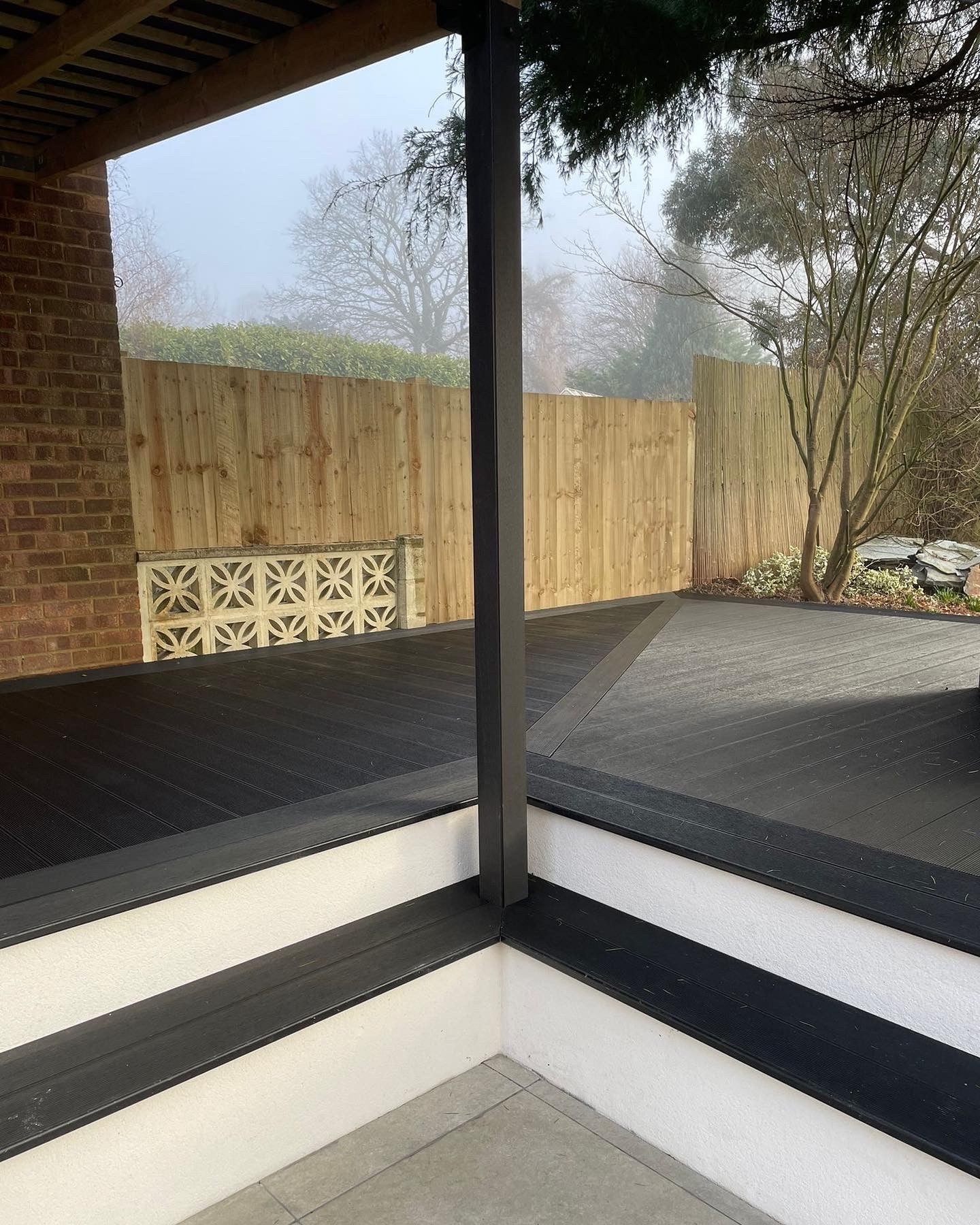The allure of the great outdoors is undeniable, and as UK homeowners, we understand the importance of maximising our outdoor spaces, especially when the British sun comes out.
One great way to achieve this is by laying decking. Decking boards not only add a touch of elegance to your property, but they also create a functional space for relaxation and entertainment.
In this extensive guide, we'll walk you through the essential steps to successfully lay decking. Plus, we'll throw in some local tips to ensure your deck can withstand the ever-changing British weather.
The Advantages of Decking
Before we delve deeper into decking installation, let's explore why it's a fantastic addition to your home:
1. Aesthetic Appeal: Decking adds a touch of sophistication to your outdoor space, making it perfect for guests and family.
2. Functional Space: Whether it's for hosting barbecues, sunbathing, or simply enjoying your morning coffee, decking creates a versatile area that is safe.
3. Property Value: A well-maintained deck can increase your property's value, which is always a welcome benefit for homeowners.
4. Easy Maintenance: Decking requires less maintenance than a traditional garden, and it can withstand British weather better than a typical lawn.
Now, let's get into the steps to make your decking dreams a reality.
Step 1: Planning and Preparation
1.1. Choose the Right Location
Selecting the perfect spot for your decking is crucial. Consider factors like sun exposure, accessibility, and the view.
For UK homeowners, having a deck that's exposed to the sun, especially in the evening, is a real luxury.
1.2. Check Local Regulations
Local councils in the UK might have regulations for composite or PVC decking. Ensure you check if you need planning permission for your project to avoid any legal issues later on.
Step 2: Gathering Materials
2.1. Decking Boards
Choose decking boards that are suited to the British climate. Hardwood, softwood, and composite materials are popular choices. Hardwood decking can add a touch of luxury, while composite materials are low-maintenance and durable.
2.2. Framework
You'll need pressure-treated timber for the frame. These should be resistant to rot and fungal decay, given the wet British weather.
2.3. Fixings
Use galvanised or stainless steel screws and brackets to avoid rust.
2.4. Foundation
For the foundation, concrete or adjustable support pads are common choices in the UK. Ensure they are level and stable.
Step 3: Decking Design
3.1. Layout
Determine the layout of your deck. Will it be attached to your house or freestanding? Create a detailed plan of your design.
3.2. Pattern
You can get creative with the pattern of your decking boards. Herringbone, diagonal, or straight patterns all have their own unique charm.
Step 4: Installing the Frame
4.1. Measure and Dig
Use a spirit level and string to mark the area. Then, dig holes for your foundation supports, ensuring they are deep enough to provide stability.
4.2. Install the Frame
Place the support posts into the holes and fill with concrete, making sure everything is level. Once it's set, attach your support beams to the posts.
4.3. Joists
Lay out your decking joists across the frame, ensuring they are evenly spaced. Use joist hangers and galvanised screws to secure them in place.
Step 5: Laying the Decking Boards
5.1. Start with the Outer Boards
Begin with the outer boards, ensuring they're flush with the frame. Use two screws at each point where the board crosses a joist for stability.
5.2. Create a Gap
Leave a small gap between boards to allow for drainage and expansion during the UK's temperature and weather changes.
5.3. Continue to the Inner Boards
Work your way towards the centre of the deck, placing the inner boards and maintaining the gap.
5.4. Trim the Excess
If your boards extend beyond the frame, trim them using a circular saw for a neat finish.
Step 6: Finishing Touches
6.1. Sanding
Sand the surface of your deck to smooth out any rough edges and create a polished finish.
6.2. Staining or Oiling
To protect your decking from the UK's unpredictable weather, consider applying a wood preserver, stain, or oil.
6.3. Railings and Balustrades
Add railings or balustrades to enhance safety and aesthetics. These are especially important if your decking is elevated.
6.4. Lighting
Outdoor lighting not only enhances the look of your deck but also extends its functionality into the evening. Solar lights are a sustainable option for UK homeowners.
Step 7: Maintenance
7.1. Regular Cleaning
The UK's climate can lead to algae and moss growth. Regular cleaning with a stiff brush or pressure washer can keep your deck in tip-top condition.
7.2. Resealing
Reapply wood stain or oil every couple of years to protect your deck from the elements.
7.3. Inspect for Damage
Check for any loose boards, protruding screws, or rot regularly, and repair as needed.
Local Tips for Decking in the UK
-
Use Weather-Resistant Materials: Given the UK's infamous weather patterns, it's essential to choose materials that can withstand rain, frost, and UV rays.
-
Regular Maintenance: In the UK, maintenance is key. Be prepared to invest time in maintaining your deck to ensure it remains in top condition.
-
Consider Anti-Slip Decking: To prevent slips and falls, consider anti-slip decking boards. This is especially important in the UK's damp climate.
-
Apply for Planning Permission: Depending on the size and location of your decking, you may need planning permission. It's always better to be on the safe side.
In conclusion, laying decking is an excellent way to make the most of your outdoor space.
Proper planning, material selection, and regular maintenance are key to ensuring your deck stands the test of time in the British climate.
With the right approach, you can create a functional and elegant outdoor area that you can enjoy year-round, whether you're basking in the rare British sun or sipping tea under an umbrella in the rain.
Remember, you can also match decking with composite cladding and galvanised steel gutters.

